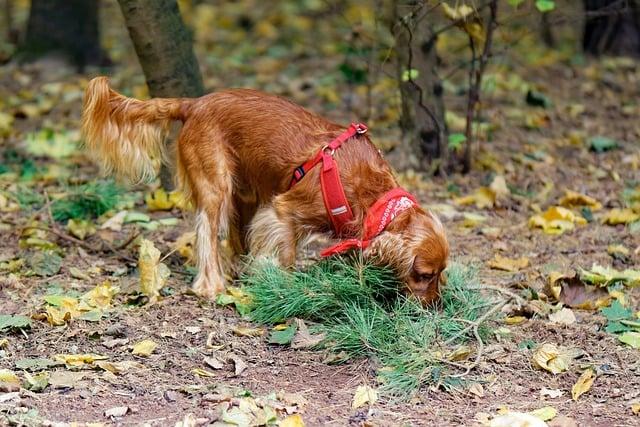Imagine coming home after a long day, only to find your dog staring at an empty bowl, tail wagging in anticipation. You might think leaving food out all day is convenient, but consider this: a friend once did just that, only to discover her pup had developed a picky palate and digestive issues. By offering meals at set times, she not only ensured her dog’s health but also strengthened their bond. So, should you leave dog food out all day? The answer is a resounding no. Prioritize your dog’s well-being with a structured feeding routine.
Contents
- The Impact of Leaving Dog Food Out on Your Pets Health
- Understanding the Behavioral Implications of Free-Feeding
- Evaluating the Risks of Spoilage and Contamination
- Best Practices for Feeding Your Dog: Structured Schedules vs. Free-Feeding
- Q&A
The Impact of Leaving Dog Food Out on Your Pets Health
Leaving dog food out all day may seem convenient, but it can have significant implications for your pet’s health. When food is exposed to air and varying temperatures, it can become a breeding ground for bacteria. This not only affects the quality of the food but can also lead to gastrointestinal issues in your dog, such as vomiting or diarrhea. **Maintaining a clean feeding environment is crucial** for your pet’s overall well-being.
Moreover, free-feeding can lead to overeating, which is a common issue among pets that have constant access to food. Dogs, much like humans, can struggle with portion control when food is readily available. This can result in **obesity**, a condition that predisposes pets to a range of health problems, including diabetes, joint issues, and heart disease. **Monitoring your dog’s food intake** is essential to ensure they maintain a healthy weight and lifestyle.
Additionally, leaving food out can attract unwanted pests, such as insects and rodents, which can pose further health risks. These pests can contaminate the food, leading to potential infections or diseases that could affect your pet. **Keeping your dog’s feeding area clean and free from pests** is vital to safeguarding their health and ensuring they consume only safe, nutritious food.
the nutritional value of dog food can diminish when left out for extended periods. Exposure to light and air can cause fats to oxidize, leading to rancidity and a loss of essential nutrients. This means that your dog may not be receiving the balanced diet they need for optimal health. **Feeding your dog fresh food** at regular intervals is a simple yet effective way to ensure they thrive and enjoy a long, healthy life.
Understanding the Behavioral Implications of Free-Feeding
Free-feeding, or leaving dog food out all day, can significantly influence your dog’s behavior and overall well-being. One of the primary concerns is the potential for overeating. When food is constantly available, dogs may not regulate their intake effectively, leading to weight gain and associated health issues. This behavior can become habitual, making it difficult for pet owners to manage their dog’s diet and maintain a healthy weight.
Moreover, free-feeding can affect a dog’s relationship with food. Dogs are instinctively wired to hunt and forage, and when food is always accessible, they may lose interest in mealtime rituals. This can lead to a lack of enthusiasm during feeding times, which can be detrimental to their mental stimulation and engagement. Establishing a structured feeding schedule can help rekindle their interest in food and create a more enriching experience.
Another behavioral implication of free-feeding is the potential for resource guarding. When food is left out, dogs may become possessive over their bowls, leading to conflicts with other pets or even family members. This behavior can escalate into aggression if not addressed properly. By implementing set feeding times, you can foster a more peaceful environment and reduce the likelihood of territorial disputes over food.
Lastly, free-feeding can hinder training efforts. Dogs thrive on routine and structure, and mealtime is an excellent opportunity for training reinforcement. When food is always available, it becomes challenging to use it as a reward for good behavior. By transitioning to scheduled feedings, you can utilize mealtime as a training tool, enhancing your dog’s obedience and responsiveness while strengthening your bond.
Evaluating the Risks of Spoilage and Contamination
When considering whether to leave dog food out all day, it’s crucial to assess the potential risks associated with spoilage and contamination. **Dry dog food**, while generally more stable than wet varieties, can still degrade over time when exposed to air, moisture, and varying temperatures. Leaving it out for extended periods can lead to a decline in nutritional value, making it less beneficial for your pet.
Moreover, **bacteria and mold** can thrive in an environment where food is left unattended. Even the most carefully formulated kibble can become a breeding ground for harmful microorganisms if not stored properly. Signs of spoilage, such as an off smell or changes in texture, can indicate that the food is no longer safe for consumption. Regularly inspecting your dog’s food can help mitigate these risks.
Another factor to consider is the **attraction of pests**. Leaving food out can invite unwanted guests, such as insects or rodents, which can further contaminate the food. These pests can carry diseases that pose health risks not only to your dog but also to your household. Keeping food sealed and stored in a secure location can help prevent these issues.
Lastly, it’s essential to recognize that **dogs have different dietary needs** based on their age, size, and activity level. Prolonged exposure to food can lead to overeating or unhealthy eating habits, which can contribute to obesity and other health problems. By managing feeding times and portions, you can ensure your dog receives the right amount of nutrition without the risks associated with leaving food out all day.
Best Practices for Feeding Your Dog: Structured Schedules vs. Free-Feeding
When it comes to feeding your dog, establishing a routine can significantly impact their health and behavior. Structured schedules, where meals are served at specific times, help create a sense of predictability for your pet. This method not only aids in digestion but also allows you to monitor your dog’s eating habits closely. By providing food at designated times, you can easily identify any changes in appetite, which can be an early indicator of health issues.
On the other hand, free-feeding—leaving food out all day—might seem convenient, but it can lead to several complications. Dogs may overeat if food is constantly available, leading to obesity and related health problems. Additionally, free-feeding can make it difficult to establish a consistent bathroom routine, as dogs may not associate mealtime with the need to relieve themselves. This can be particularly challenging for puppies still learning their house-training skills.
Another important consideration is behavioral issues. Dogs thrive on routine, and a structured feeding schedule can help reduce anxiety and promote a sense of security. When meals are predictable, dogs are less likely to exhibit food guarding behaviors or become overly possessive of their food. A set feeding time also encourages a stronger bond between you and your pet, as it becomes a shared experience that fosters trust and companionship.
Ultimately, the choice between structured schedules and free-feeding should be based on your dog’s individual needs, lifestyle, and health considerations. If you opt for a structured approach, be consistent with portion sizes and feeding times. Conversely, if you prefer free-feeding, monitor your dog’s weight and behavior closely to ensure they are maintaining a healthy lifestyle. Whichever method you choose, prioritizing your dog’s well-being is key to a happy and healthy life together.
Q&A
-
Is it safe to leave dog food out all day?
Leaving dog food out all day can lead to spoilage, especially in warm environments. Wet food is particularly susceptible to bacteria growth, while dry food can attract pests. To ensure your dog’s health, it’s best to provide meals at specific times.
-
Will my dog overeat if food is left out?
Many dogs will eat only when hungry, but some may overeat if food is constantly available. This can lead to obesity and other health issues. Establishing a feeding schedule helps regulate your dog’s appetite and maintain a healthy weight.
-
How often should I feed my dog?
Most experts recommend feeding adult dogs twice a day. Puppies may require more frequent meals. A consistent feeding schedule not only supports digestive health but also strengthens your bond with your pet.
-
What should I do with leftover food?
If your dog doesn’t finish their meal, it’s best to store any leftover food properly. Seal dry food in an airtight container and refrigerate wet food. This practice helps maintain freshness and prevents spoilage, ensuring your dog always has safe, nutritious food.
while leaving dog food out all day may seem convenient, it can lead to health issues and behavioral problems. Prioritizing your dog’s well-being with scheduled feeding times ensures they remain healthy, happy, and well-adjusted. Make the smart choice for your furry friend!

大家好,我是彼得潘,專業的手法身體治療師。我喜歡探索和研究各種主題,並透過與人工智慧的合作分享專業、實用、有趣的文章。我們定期進行人工審核,以確保內容的準確性。如果您發現文章中有任何不準確的地方,請隨時與我們聯繫,我們會及時糾正。您可以透過 [email protected] 與我們聯繫。



